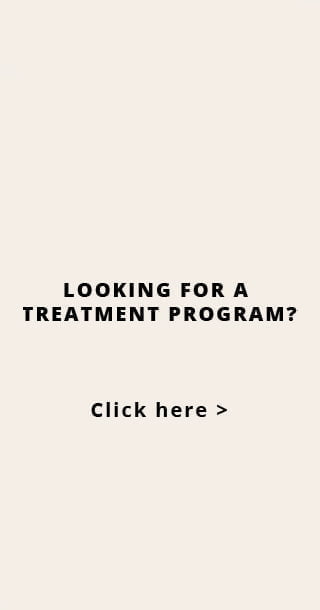Research suggests that traumatic events may range from 61 percent to 80 percent in a person’s life. While the majority of these traumatic incidents are easily manageable from everyday activities, some may become unbearable, significantly impacting the sufferer’s life. Many people also develop posttraumatic stress disorder, a severely debilitating psychiatric disorder affecting their life quality for years.
For people experiencing the aftermath of one or more traumatic events, trauma-focused CBT can help. [1] This type of mental health treatment has been specially formulated to help people with a history of trauma find ways to manage hurtful emotions and behaviors. The therapy follows a definitive mechanism of action and is delivered by specially trained professionals to ensure that a person has the best chance at a trauma-free life.
What is Trauma Focused CBT, and How Does it Work?
Trauma focused CBT, also known as TF-CBT, is a type of therapy that targets and helps children and adults while empowering them and their caregivers or parents. The central goal of this therapy is to promote communication, relationship building, and stress management related to trauma, all of which make a patient feel more supported. In most cases, TF-CBT includes psychoeducation, an intervention focused on helping patients learn and understand more about trauma and how to cope with it. By truly understanding the effects of their trauma, such people can cope with it much better while finding practical solutions.
Remember that trauma focused CBT in adults and children requires working with social workers, counselors, psychiatrists, or psychologists. All of these professionals can deliver TF-CBT provided they have a special certification.
For most people, TF-CBT involves the following three treatment phases:
- Stabilization
- Integration and consolidation
- Trauma narration and processing
As a part of the three phases mentioned above, TF-CBT includes the following eight components: [2]
- Psychoeducation: This step involves providing information regarding trauma and trauma responses to validate what a patient is feeling. Experts also teach caregivers and loved ones different techniques to cope with the patient’s trauma responses and impart skills regarding behavior management and improving communication.
- Relaxation Techniques: In this step, experts teach patients different relaxation skills to help them cope with trauma.
- Affective Expression & Regulation: This step helps the child and parent feel more comfortable managing, identifying, and expressing their feelings and thoughts while fostering better emotional regulation.
- Cognitive Coping & Processing: This step allows patients and their caregivers to identify all maladaptive or inaccurate behaviors and thoughts in addition to helping them replace this negativity with more helpful responses.
- Trauma Narrative Development & Processing: This step helps children address specific details about the trauma they experienced, usually by using a creative medium. This allows them to process their experience and responses properly. The step is repeated in joint sessions to help their loved ones process their experience and reactions.
- In Vivo Exposure: Depending on a child’s individual needs, this step may or may not take place as a part of trauma-focused CBT. Where needed, in vivo exposure involves slowly exposing a child to various trauma reminders while helping them build skills to master their fears instead of developing an avoidant behavior.
- Conjoint Parent-Child Sessions: These joint sessions provide a child and their caregivers a chance to discuss the trauma and receive support in a therapeutic setting.
- Enhancing Safety & Future Development: In this step, the therapist, along with the patient and their loved ones, work together to improve the patient’s feelings of trust and safety.
What to Expect from Trauma Focused CBT for Adults
Trauma focused CBT is a relatively short-term intervention that typically lasts eight to twenty-five sessions. The therapy sessions can occur in different settings, such as a group home, outpatient mental health clinic, school, hospital, in-home setting, or community center. Treatment generally involves a non-offending caregiver or partner. During initial sessions, the patient and the non-offending loved one undergo therapy separately, slowly advancing to engage in joint sessions later.
Read Also About Trauma and Resilience
As a part of therapy, an expert aims to help modify unhelpful or distorted thinking and negative behaviors and reactions. They also support patients in challenging their thoughts of fear or guilt and hem them reorganize their thinking more happily and healthily. The family therapy aspect of TF-CBT addresses the issues family members may face when dealing with a loved one with a traumatic past. This therapy may teach them different aspects, such as communication, stress management, and effective parenting skills.
Are There Any Limitations?
Despite being a successful therapy, TF-CBT has certain limitations. For instance, it may not be the most appropriate treatment approach for adolescents and children with conduct disorders or other behavioral concerns present before they experience trauma. Such patients must first receive help for these pre-existing difficulties with other approaches, after which they can adopt a trauma-based treatment modality.
People abusing substances or showing suicidal tendencies may not immediately respond well to TF-CBT; some may even experience worsening symptoms during this therapy. While the therapy can still benefit them to some extent, experts must modify the place it is delivered along with the order of interventions. For this purpose, experts often resort to dialectical behavioral therapy or another type of stabilizing therapy approach before resorting to TF-CBT for people with a history of parasuicidal behavior or self-harm.
FAQs
When do experts recommend trauma focused cognitive behavioral therapy?
Experts came up with TF-CBT to help children who suffered from sexual abuse. With time, its scope continued to widen to include adolescents and adults who have gone through a single event or repeated episodes of sexual, mental, or physical abuse in addition to the symptoms of anxiety, depression, or trauma. Some people may also benefit from trauma focused CBT as an adjunct therapy to other forms of treatment, like dialectical behavioral therapy.
How effective is CBT trauma focused therapy?
Research has shown that adolescents and adults going through intense emotional repercussions due to trauma respond well to TF-CBT. So far, up to eleven empirical studies have investigated the efficacy of trauma-based CBT in adolescents who survived trauma. These studies have demonstrated its benefits and usefulness in symptom reduction in cases of PTSD, anxiety, and depression. Randomized clinical trials comparing TF-CBT with other therapies have also shown that the former has greater gains within fewer sessions. Moreover, these gains are easily sustainable over time.
How can I choose an expert to engage in TF-CBT?
There is accreditation to gain to deliver trauma-focused cognitive behavioral therapy effectively. However, many supplemental courses and training are available to prepare experts better. If you are thinking of trying this therapy, choose someone with experience in this field and someone you can comfortably discuss your problems with. Following are some questions you can ask a therapist to ensure that you choose the right one:
- What is the extent of your experience with trauma-focused CBT?
- Will you offer joint therapy sessions with other loved ones, and if yes, to what extent?
- Will there be an assessment process to track the functioning of the patient and family?
What is the difference between trauma focused CBT and CBT?
TFCBT is a subtype of CBT that focuses specifically on addressing the impacts of trauma. This specialized therapy was designed to help children and adolescents get through the effects of trauma, whereas CBT was originally introduced to help people of all age groups. Regular CBT is not specific to people with a history of trauma and can benefit those with eating disorders, mood disorders, schizophrenia, anxiety, and more. It may also help resolve relationship conflict, anger management issues, and high-stress levels.
Is medication better than TFCBT?
Psychiatric medications have been a common part of trauma therapy as they can help reduce the severity of different symptoms. Consequently, many patients find it easier to engage in daily therapy. However, it is crucial to understand that while medications can provide significant symptomatic relief, their effects are only until a person uses them. The minute a person stops taking their medications, they are likely to relapse with a return of the symptoms, as medication cannot address the underlying root cause of traumatic experiences. Conversely, TF-CBT helps patients understand the cause of trauma and learn to challenge it while developing new coping mechanisms.
References
[1] Mannarino AP, Cohen JA, Deblinger E. Trauma-focused cognitive-behavioral therapy. Evidence-based approaches for treating maltreated children: Considering core components and treatment effectiveness. 2014:165-85.
[2] Cohen JA, Mannarino AP, Berliner L, Deblinger E. Trauma-focused cognitive behavioral therapy for children and adolescents: An empirical update. Journal of interpersonal violence. 2000 Nov;15(11):1202-23.


